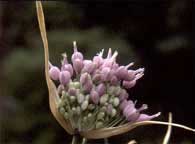|
 IUCN - Red List IUCN - Red List |
 Important Plant Areas (IPAs) Important Plant Areas (IPAs) |
 Islands and conservation Islands and conservation |
 Invasive Alien Species in the Mediterranean Invasive Alien Species in the Mediterranean |
| |
|
Red-Listing for the Mediterranean region
The
Mediterranean region is one
of the worlds biodiversity hotspots.
The countries of this region
share a common semi-arid ecosystem
with hot, dry summers and mild,
wet winters. They also share
a common fauna and flora as
well as a number of regional
initiatives (such as the Barcelona
Convention, the EuroMed programme
and the METAP programme) that
recognise their geographical
and ecological integrity, bordering
a shared sea.
IUCN-Med has linked up with
the IUCN Species Survival Commission
and the Conservation International
(CI) Centre for Applied Biodiversity
Science to develop a number
of regional Red Lists that can
guide conservation planning
and implementation in the region
and also feed into the global
assessments being made for all
many major taxonomic groups.
The
Mediterranean red listing process
follows the regional red listing
guidelines.
There
are nine categories
in the IUCN Red List system:
Extinct, Extinct in the Wild,
Critically Endangered, Endangered,
Vulnerable, Near Threatened,
Least Concern, Data Deficient,
and Not Evaluated. Classification
into the categories for species
threatened with extinction (Vulnerable,
Endangered, and Critically Endangered)
is through a set of five quantitative
criteria that form the heart
of the system. These criteria
are based on biological factors
related to extinction risk and
include: rate of decline, population
size, area of geographic distribution,
and degree of population and
distribution fragmentation.
For
further information, please
contact Annabelle Cuttelod.
|
|
|
Important Plants Areas (IPAs)
The
IUCN Centre for Mediterranean
Cooperation and Plantlife International
are working in partnership with
the IUCN Species Survival Commission
and Planta Europa to develop
the Important Plant Areas (IPA)
programme in the Mediterranean
region. IPAs are intended to
be areas of great botanical
importance for threatened species,
habitats and plant diversity
in general, that can be identified,
protected and managed as sites.
The WWF/IUCN Centres of Plant
Diversity project (1994) identified
large regions of botanical importance,
and the Mediterranean was among
one of the major hotspots. This
IPA programme is intended to
build on this approach to identify
areas that are appropriate for
a site-based approach to conservation.

Responding to International
policy processes, IPA identification
provides the framework for governments
to achieve Target 5 in the Convention
on Biological Diversity's Global
Strategy for Plant Conservation.
IPA identification is also a
tool intended to add to conservation
efforts by providing specific
plant data (Redlists) that can
inform other existing national,
regional and global conservation
programmes. It will also make
available a foundation of mapped
data regarding IPA's, set standards
and act as a reference point
linking science and policy,
thus guiding relevant national
legislation and providing a
structured approach for future
environmental impact assessments,
compensation measures and further
decision-making processes.
Other Documents:
Factsheet:THE IPA DATABASE
Propositions
de Zones Importantes pour les
Plantes au Maroc
By Mohammed Fenane
Rapport: Atelier Zones Importantes pour les Plantes du Maroc
(Oct.2004)
For
further information, please
contact Rami
A. Salman.
|
|
Islands and species conservation
With
almost 5,000 islands and islets,
the Mediterranean comprises one
of the largest groups of islands
in the world. The region is of
high value to global biodiversity
due to its wealth of species,
relatively high rate of endemism,
long history, and tolerance of
all kinds of disruptions, as well
as its role as a natural laboratory
for evolutionary studies.
The Mediterranean region is
5,000km from west to east and
over 2,000 km wide (Lacoste,
1999). Of the drainage basin,
islands cover some 100,000 km2
of a total of 1,900,000 km2.
There are some 4,000 islands
of less than 10 km2 in area
and 162 islands which are at
least 10 km2. The nine Mediterranean
islands of over 1,000 km2 account
for 83% of the total island
area.
| Area of
the largest Mediterranean
Islands |
| Islands |
Area
in km2
|
| Sicily |
25,462
|
| Sardinia |
23,818
|
| Cyprus |
9,251
|
| Corsica |
8,680
|
| Crete |
8,259
|
| Evia |
3,655
|
| Mallorca |
3,618
|
| Lesbos |
1,630
|
| Rhodes |
1,401
|
| Chios |
840
|
| Cephalonia |
782
|
| Minorca |
683
|
| Corfu |
592
|
| Ibiza |
542
|
| Djerba |
530
|
Source:
Brigand, 1991
Isolation from land masses, amongst
other factors, produces endemism,
and there are high rates of plant
endemism (about 10% on average)
in Mediterranean islands. However,
the continuous environmental pressure
maintained by humans in the Mediterranean
throughout history is now an inescapable
component of all Mediterranean
ecosystems. Over the last few
decades, major socio-economic
changes have increased the negative
impact of such human activity,
mainly along the coasts. In this
respect, the islands are extremely
vulnerable, as their small size
increases the effects of disruptions.
For further information,
please contact Rami
A. Salman. |
|
|